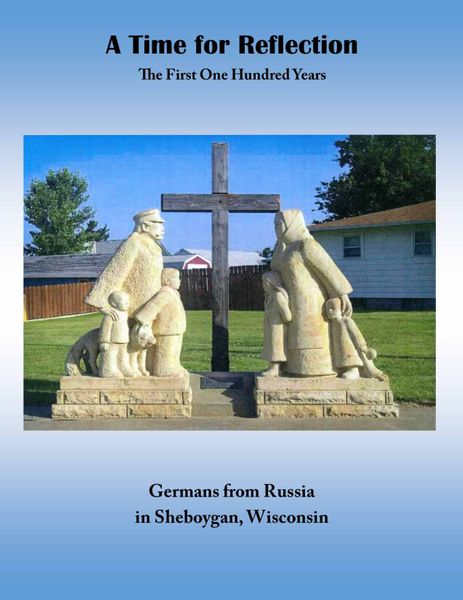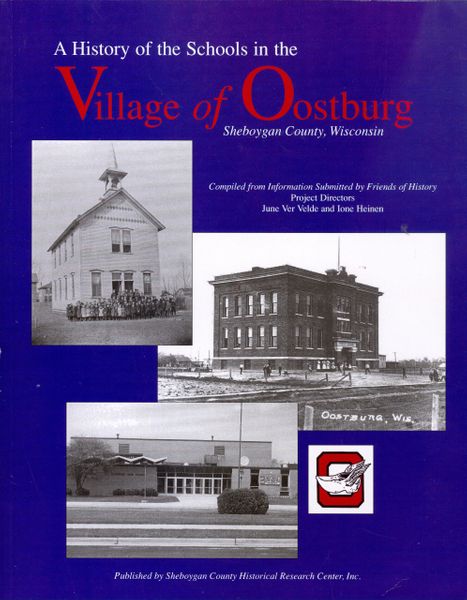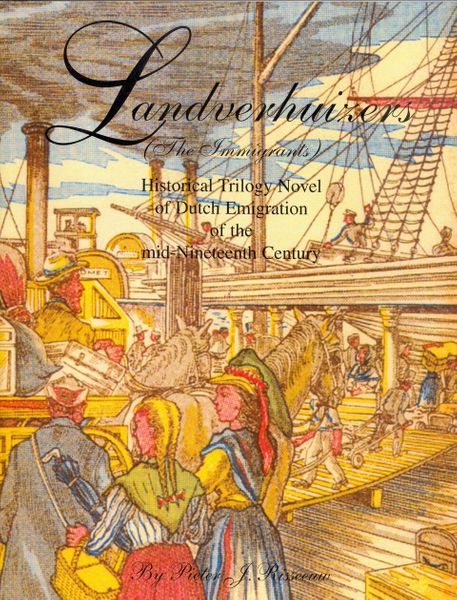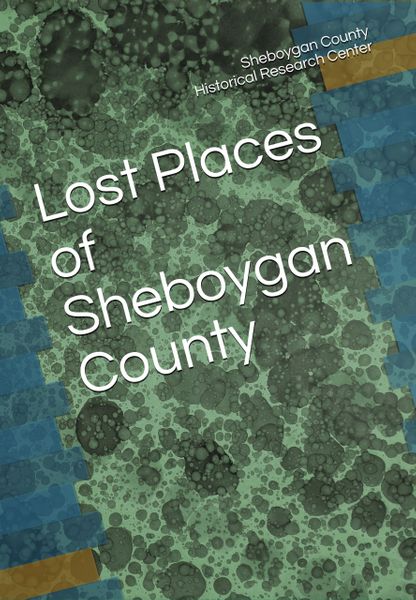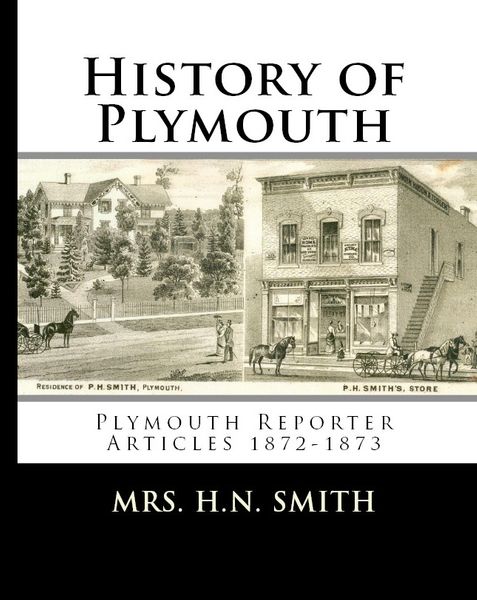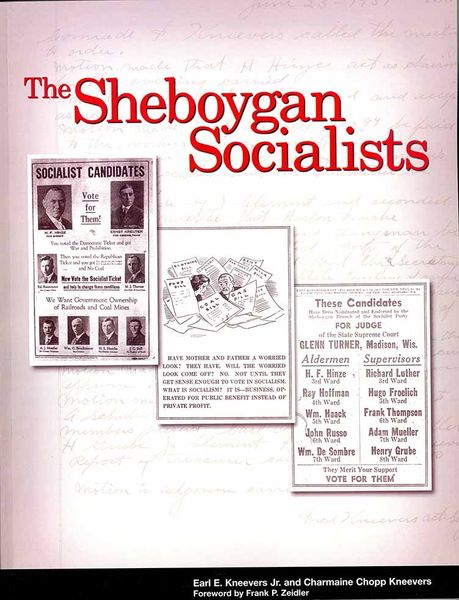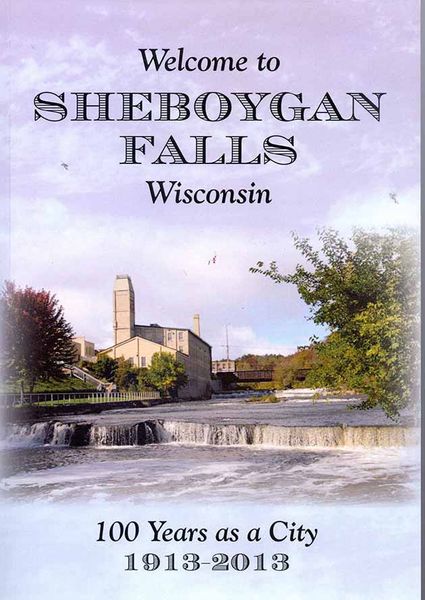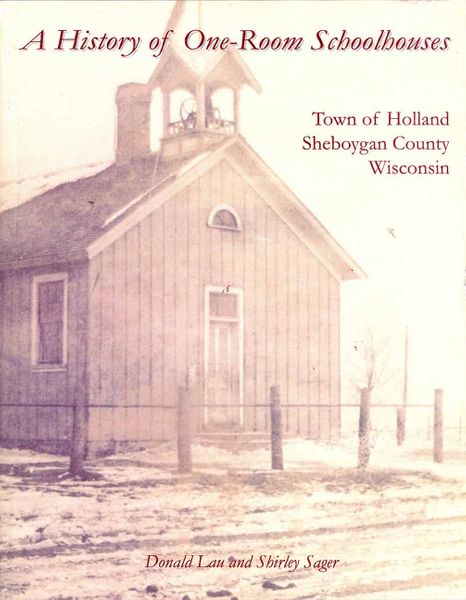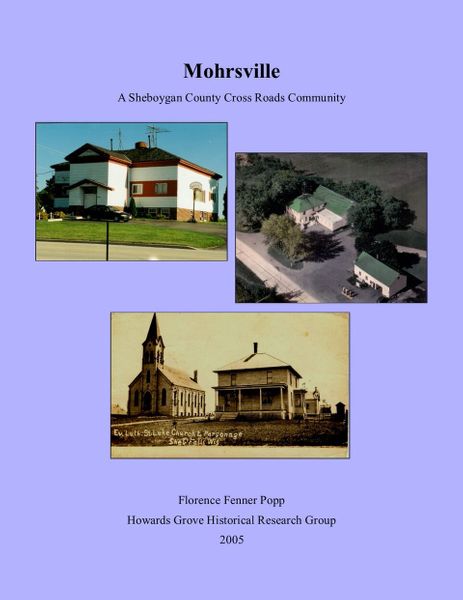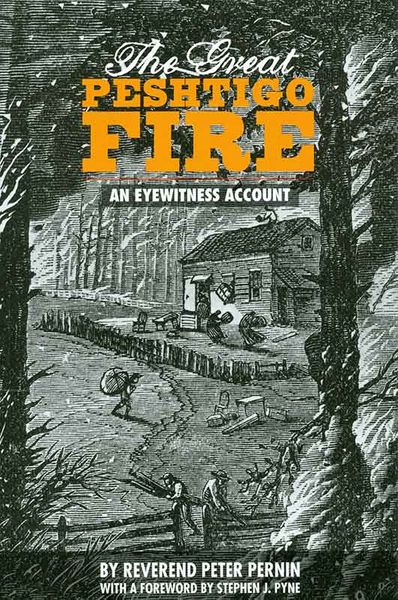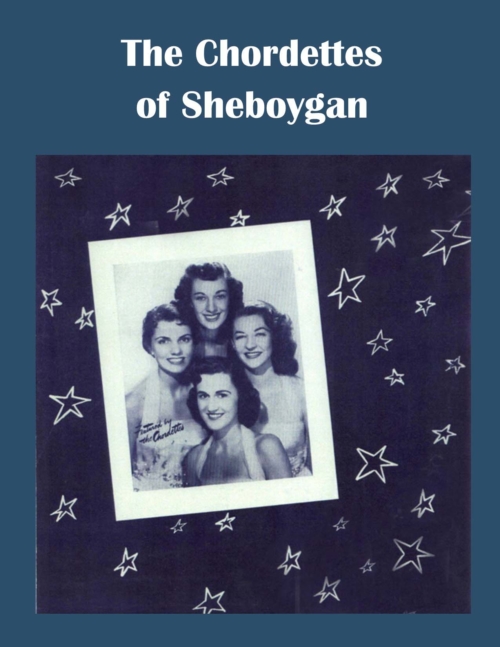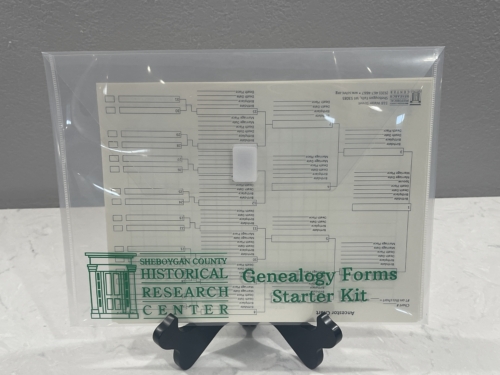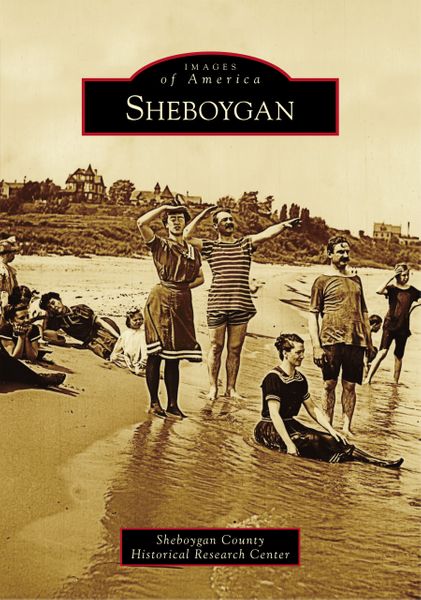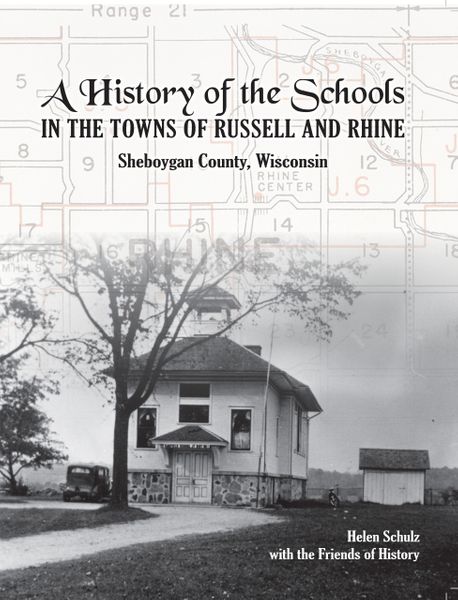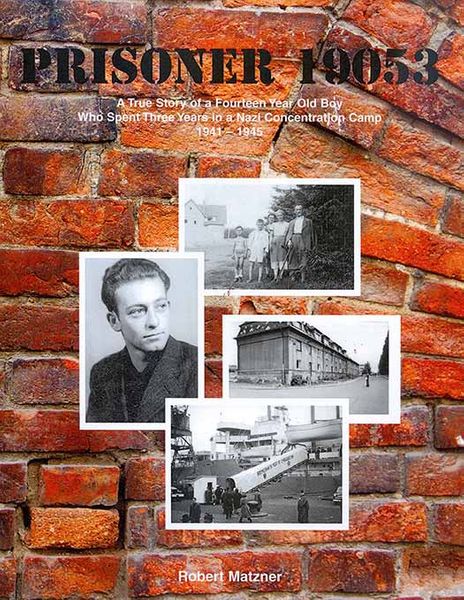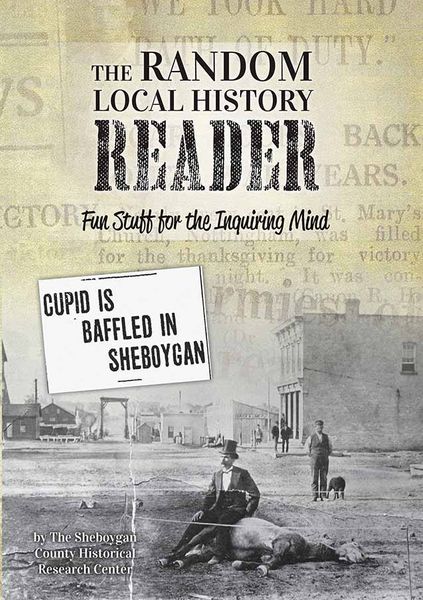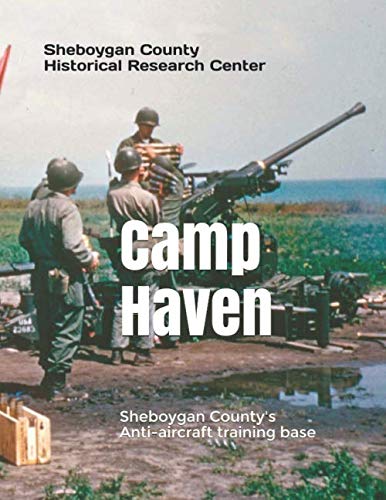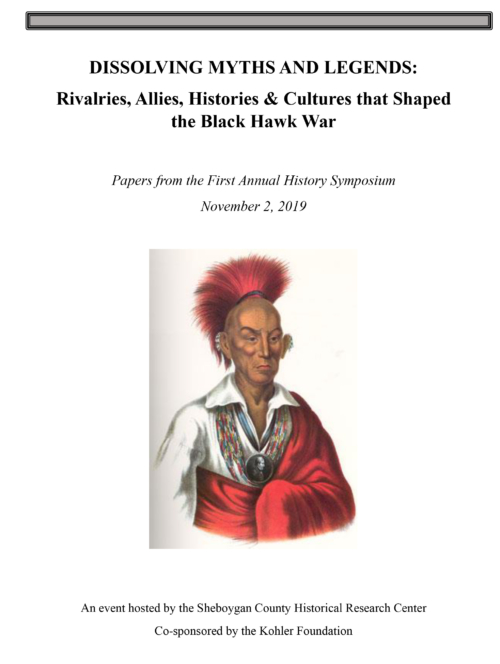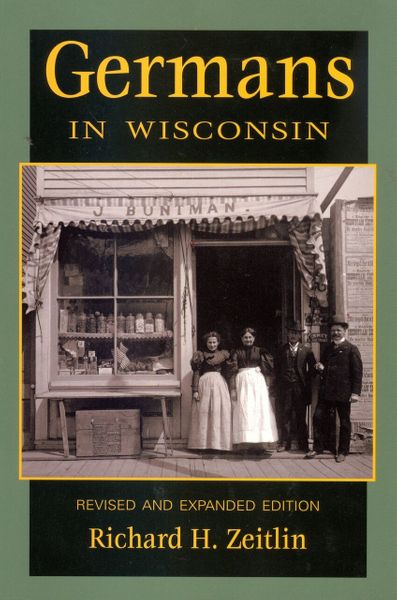-
A Time for Reflection 1892-1992 This booklet was prepared for a centennial celebration of the arrival of the first Volga Germans in Sheboygan, Wisconsin. That small group of seven, unsure of their destination or what they would do when they arrived, was followed by many other relatives and friends. Today, thousands of people who live in Sheboygan - or who lived there at one time - are descendants of German Russian immigrants. “A Time for Reflection” is our anniversary theme, for now is an appropriate time to reflect on our ancestors’ lives and to count the many blessings we have received as a result of their courage and sacrifice. With a new government in power, many Russian people of German descent will be searching for relatives and acquaintances in the West. Many Americans, too, want to be reunited with lost kin. We want to be ready to help each other. The history, chronology, and maps in this booklet represent only a small part of our unique heritage. Here is a brief look at the Volga Deitsch, how they got to Russia and why they came to America, and then to Sheboygan. It is a tale of more than 200 years of travel, hardship and joy endured by our ancestors. Older generations might recall the good times as well as the not-so-good when they read about old customs and practices. Younger people may learn a history they did not know existed. This 2016 update adds extra photos and more history.
-
Sale!
By Bill Wangemann
This second book of Bill’s is a compilation of articles that appeared in the Sheboygan Press during 2004. Many are based on activities of the 1950s
-
Sale!This book covers Oostburg school history from 1899-2005. A great timeline gives the reader a wonderful overview of what happened educationally and socially in Oostburg, Wisconsin. Class photos and memories and reflections are included.
-
Sale!
By Pieter J. Risseeuw
A historical novel, originally published as a trilogy, of Dutch immigration of the mid-nineteenth century. This English translation is made available for the first time by permission of the original publisher and supported by Netherland-America Foundation of New York. Originally published in Dutch in 1947, the novel discusses the trials and tribulations of immigration and the establishment of the Dutch churches and colonies in Iowa and Michigan.
-
Sale!Though we have nothing as dramatic as Pompeii, Mesa Verde or Petra, we, too, have lost settlements. Our lost settlements like Hoard, New Paris, Bear Lake, Gooseville and Hull’s Crossing are lost places of Sheboygan County- communities that were, for a short time, vibrant and busy, but fell into decline and disappeared except for the occasional mention on an old Sheboygan County map.We’ll take a trip back to reconnect with many of our local mysteries.Available about December 6, 2018.
-
By Laura Chase Smith This history of the township of Plymouth, the Villages of Plymouth and Quitquioc, Sheboygan County, Wisconsin was written by Mrs. H.N. Smith. This series of articles was published in the Plymouth Reporter between December 10th, 1872 and June 5th, 1873. It details the lives of Plymouth’s earliest citizens.
-
Sale!By Don Lau This book documents the growth of education in the City of Sheboygan. Did you know that Sheboygan had a Day School for the Deaf, A Fresh Air School- Tuberculosis- as part of the Third Ward School and was the first home of Lakeshore Technical College? Dozens of photos.
-
By John Textor This is the story of the November 1847 sinking of the propeller ship, Phoenix, from a new perspective. Most of the fatalities were of new Dutch immigrants and this book tells of how life might have been different had the catastrophe not happened.
-
Sale!By Earl and Charmaine Kneevers During the late 19th and early 20th century, there was a relatively strong Socialist movement in the United States. Sheboygan, Wisconsin was one of those cities that had an active Socialist Party. The movement believed in public ownership and democratic management of the basic means of production and distribution. It had strong ties to the organized labor movement of the time. A strong leader of the Sheboygan movement was Fred Kneevers, whose history as a struggling worker with a family to support and with Socialist beliefs, brought him into the hotel and restaurant business to support his family when known Socialists were not welcomed in privately run businesses. The Kneevers' Hotel was a successful meeting place of the Socialists.
-
By Janice Hildebrand This book is a tribute to the City of Sheboygan in its sesquicentennial year 2003. The area that is now the city was settled years before 1853, but the city was not chartered until then. This book documents 45 men and women who were important in Sheboygan's early years. Each bio contains one or more photos. 2016 reprint.
-
Sale!This is a reprint and update of the 1976 book done for the Bicentennial. This book was done in conjunction with the 100th anniversary of Falls becoming a city. Trace the evolution of the business district and learn about the wide variety of civic groups which once kept citizens busy. See how the fire department has grown and take a peek at the folks who settled Falls
-
Sale!By Bill Wangemann Mr. Wangemann began writing a weekly column for The Sheboygan Press in January of 2003 to help celebrate Sheboygan’s Sesquicentennial. Contained within this book are all 52 of the columns Bill wrote for the Press. Down By Prange’s brings readers a simpler slice of life. Wangemann paints a realistic picture of Sheboygan’s past, the good and the bad, and you are guaranteed to learn something about old Sheboygan by paging through this collection of columns.
-
Sale!By Don Lau and Shirley Sager The schools covered in this book include Jefferson, South Cedar Grove, West Oostburg, Beaver Creek, Maple Grove, Fairview, Greene, Amsterdam, River Valley, West Cedar Grove, Liberty, Lakeview and Hoard.
-
By Florence Fenner Popp Mohrsville was a small settlement located at the intersection of the Green Bay and Howards Roads in the town of Herman approximately 2 miles north of Sheboygan Falls. In the early 1900s Highway 32 was known as the Green Bay Road, and later for some time, it was Highway 42. Until World War II, County O was known as the Howards Road. Mohrsville consisted of: Starlight School, Mohnsam’s, the old cheese factory where Carol and Manny Zunker lived and Zunker’s garage. It was named for Paul Mohr who formerly owned a tavern there
-
Sale!By Reverend Peter Pernin Rev. Pernin was the parish priest for Peshtigo and nearby Marinette, whose churches burned to the ground. He published his ac-count of the fire in 1874. The late William Converse Haygood served as editor of the Wisconsin Magazine of History from 1957 to 1975. He prepared this version of Father Pernin's account on the occasion of the Peshtigo Fire's centennial in 1971.
-
Sale!By Scott Knickelbine On the night of October 8, 1871, a whirlwind of fire swept through northeastern Wisconsin, destroying the bustling frontier town of Peshtigo. Trees, buildings, and people burst into flames. Metal melted. Sand turned into glass. People thought the end of the world had come. When the "tornado of fire" was over, 2,500 people were dead, and Peshtigo was nothing but a smoking ruin. It was the deadliest wildfire in U.S. history. Kids’ book.
-
Sale!By Richard A. Stoelb This is the story of the men of Company F, 127th Infantry, 32nd Division, Wisconsin National Guard who left Sheboygan, Wisconsin for Federal Service on October 15, 1940. They would fight in the Battle for Buna on the island of New Guinea against the Japanese in World War II. Richard’s father, Roland Stoelb, was one of those soldiers who fought in the jungles of the Pacific to stop the Japanese during World War II. Roland along with dozens of boys from Sheboygan spent their Time in Hell, many of them making the ultimate sacrifice. Richard’s story personalizes the fight in the Pacific and honors the boys from Sheboygan.
-
Sale!By Floyd Odekirk and Adrian Falchion Waiting on DEROS: A Soldier’s Story could not have been accomplished without the efforts of a Veteran, a writer and the spirit of every soldier walking within the pages of this book. Floyd Odekirk pursued the emotional task of bringing back the images of his tour in Vietnam (1968-69) so that the writer, Adrian Falchion, could paint in all its vibrant and dark colors the truths of war. Following the completion of 19 stories, Floyd Odekirk offered the light to his Veteran Brothers Michael Bennett, David Higgins, Craig Johnson, Dale Moravec, Donald Burch, Patrick Callahan, Joseph DeAugustine, Robert Moneypenny, Daniel Michael Pruitt and Thomas Vojvodich who each shared a story for the sake of honoring other soldiers.
-
Sale!Situated on the picturesque western shore of Lake Michigan, is a city of contrasts and conundrums. It is a modern city facing all the challenges of today’s world, ready and willing to transition into the future. But, at the same time it is a city comfortable with long-established customs struggling to keep the time-honored traditions which have made it a great place to live. It is a place where people stay on the same bowling teams for decades, where churches are always full and focused on the community and where everybody knows everybody else in the local taverns. Chapters included in this book include: Blazing Trails; The First Fifty Years; Saloons and Public Houses; Railroads Bring Prosperity; Riding the Trolley; Eighth Street- The Heart of Sheboygan; and Parades, Festivals and Events.
-
Sale!This book takes us back through the history of education in the northwest corner of Sheboygan County. Starting both sections with a history of the named township, this team of writers takes us from the early settling of the area to the recent consolidations. Each school is looked at in detail and the many pictures of facilities, classes and notable events take the reader on an enjoyable journey through the past. Also included are a comprehensive index, 1889 plat map, master plan for education in Sheboygan County and biographies of Ray B. Lightfoot, Violet R. Littlefield and Doris G. Phipps. Schools covered: Russell, Taft, Garfield, Little Elkhart Lake, Joliet, Elkhart Lake, Harrison, Dewey, Lime Ridge, Rhine Center and Victory. Originally published in 1997, this reprint contains updates and improved imaging.
-
Sale!By Robert Matzner Sheboygan resident, Robert Matzner, had a very important story to tell. Friend, Larry Vogel, helped him to put pen to paper. The result is Prisoner 19053, the true story of Matzner’s three years in Nazi concentration camps. Matzner, a native of Poland, lost most of his family to the Nazi’s Final Solution. He somehow survived the horror and came to the United States and Sheboygan with his family in 1949. Robert and Larry have written a remarkable document, a story full of sadness and hope which will touch all readers. The introduction, written by Robert’s son, Murray, is a poignant tribute and a great beginning to Prisoner 19053.
-
Sale!The Random Local History Reader is filled with odd and interesting history. What is the real story of the Dead Horse? Who was the Black Terror of Sheboygan? Have you ever read an obituary for an outhouse? Learn the meaning of the term, Yeggman. Find out why Cupid was baffled. And read the full story behind the murder of revered, early teacher, John Sexton. Great reading for quiet time, you’ll enjoy every story and photo included in this random collection of historical gems.
-
By Richard Zeitlin Between 1820 and 1910 nearly five and a half million German immigrants came to the United States. Most settled in the Midwest and many came to Wisconsin. Learn about the values and the Germans brought with them from the Old Country.
-
By Howards Grove Historical Research Group, Doris Henschel.
Ada was one of four small trading places (Howard, Franklin, Edwards and Ada) in the township in 1912. Ada consisted of a hotel, cheese factory, store and blacksmith. The population of town Herman in 1910 was 1,913, the majority of whom were Germans. This hamlet, located on the old Calumet-Sheboygan Plank Road twelve miles northwest of Sheboygan has a name of unknown origin. The post office was established on January 13, 1868, with Anton Goepfert acting as the first postmaster. Operations were discontinued on November 18, 1873. It was re-established on August 31, 1877, and once again discontinued permanently on April 30, 1909. William Maurer was the last postmaster. The book is full of history and wonderful memories.

